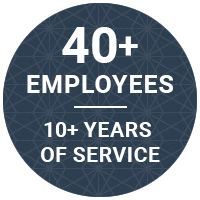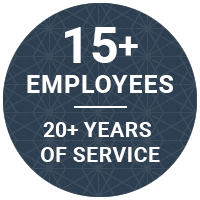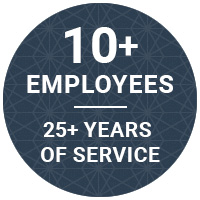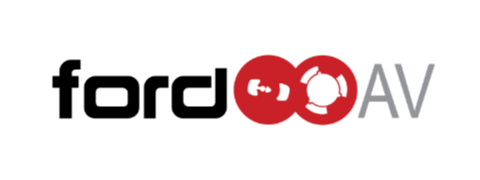



The following company history is not what you might expect. This history is a story of the people that gave (and the many that still give) their best to Ford Audio-Video. It is their dedicated hard work and drive for excellence that has made the company what it is today. This history is for these people and we are all grateful to them for their contribution. Thank You!
In February of 1973, the company was founded in Oklahoma City by Claire and Jim Ford. Initially the company designed and built recording studios and rented sound systems. Based upon Jim Ford’s experience as a musician and recording engineer, coupled with his degree in Electrical Engineering from the University of Oklahoma, the company designed and built recording studios from the ground up, including acoustics, noise control, lighting, and audio electronics.
The studio business included major installations in Southern California and Hollywood. Brian Roth was the company’s first engineer. The company designed and manufactured professional audio equipment. The first product was an electronic crossover, followed by a powered studio cue system for musicians. The manufacturing portion of the business expanded to include large, 32-input recording consoles. During this period, Jim and Brian taught classes for the Recording Institute of America (RIA) and wrote monthly articles for Modern Recording magazine. John Murphy followed Brian and continued designing and manufacturing studio equipment.
In 1974, Claire Ford left her job as a science teacher to “help out”. Claire focused on the accounting, purchasing, and management aspects, while Jim engineered and directed sales. In 1976, the company moved to an 8,000 square foot building. During this year, Jack Langston and Steve Simmons joined the company as salespeople.
In 1975, Mark Dotter, BSEE, one of the students in a Tulsa RIA class, approached the company about working in the sound business, and the Tulsa Division began operating. Bryan Burdick started with the Tulsa Division in 1978 as a salesperson and became the Division Manager in 1984. Bryan was named Vice President in 1990 and plays a vital role in managing the company today.
In 1974, Ford installed its first church system. Since the, the company has installed more than 4,000 church systems across the nation. Currently, we average about 60 church installations per year. A great deal of the credit for our success in churches goes to Jack Langston. Jack retired in 2006 after 30 years with our company. Jack made many friends and often helped a young minister of music get the system he or she wanted. Many pastors and ministers of music tell me today how thankful they are to have had Jack Langston as a friend. Beyond Jack’s ability to sell, he gave all of us at Ford much more. He gave us an example to follow; one of integrity, dependability, determination, faithfulness and an uncompromising drive for excellence. We cannot thank him enough.
Starting in 1975, Steve Simmons and Clay Mangum began to sell large commercial systems and kept all of us laughing. Taking over for Steve in 1981 was Randy Riebe and later Mike Louthan. Randy and Mike were instrumental in selling large commercial jobs such as the Houston Intercontinental Airport, the Fiesta Texas theme park, and the JC Penny’s corporate headquarters project. These first jobs were the foundation for establishing Ford as a nationally known contractor. In addition, during the early 1980’s, Ford installed the Astrodome in Houston, TX and the US Postal Training Center in Norman, OK.
Ford has always placed a high importance on engineering and service. Our first system design engineer was Fred Schafer. Fred was more than an engineer; he was an artist. In one church auditorium he hand-painted the speaker grill cloth to match the gold leaf architectural details. Following Fred was Chuck Becton, E.E., and then David Weibel, E.E.T. David Allen, E.E.T., started as an engineer in 1996, became the Division Manager in Austin in 2003, was named Vice President in 2007, and plays a vital role in managing the company today. Ken Koceski, E.E., joined Ford in 1996, and under his leadership, continued to guide the engineering center. Today we have 100 degreed Project Engineers and Field Engineers on staff. We believe that our engineering center is the best in the country.
Our ability to design and install large, high-tech jobs safely and with attention to detail improved. Many of the projects that we were capable of installing were not in Oklahoma, so we expanded to where the work was. The Dallas office opened in 1989; Denver in 1992; Las Vegas in 1998; Austin in 1999; Houston in 2000; Phoenix in 2017; Washington D.C. in 2021, and San Antonio and Salt Lake City in 2022. We also have sales and technical support staff in Kansas City, MO; Chicago, IL; Wichita, KS; Honolulu, HI; Orlando, FL; Fresno, CA; San Francisco, CA; and Atlanta, GA.
In 2000, we built an additional 50,000 square foot facility, which improved our facilities for engineering, service, project management, fabrication and testing and includes a large training and product demonstration center. As Ford became recognized for our quality of work, we were fortunate to be invited to work on some of the largest and most technically complex AV systems in the nation.
We continue to perfect and improve our customer communications in many areas, from the beginning of the sale to the completion of the installation, and are proactive in providing training. Our focus has become the design, installation, training, and service of professional sound, video, lighting, network, and security systems. To this end, we continue to add industry professionals to our work force. Additions to our engineering staff include degreed professionals in data networking, software development, broadcast television, lighting systems, acoustics, and computer systems. Traditionally, we may be thought of as an AV company, but with the transition from analog to digital electronics and to the control and transmission of audio/video media over data networks ,we also sell services for data network professionals, including software, switches, routers, and servers.
I cannot emphasize enough the value and importance of the people that have continued to work at Ford. It is these people that have persevered, solved the problems, created systems, made our procedures better, improved our technology, and continue to push to make Ford the best it can be. It is also these people and their families that make me enjoy coming to work each day. Currently there are more than 500 people continuing to strive for excellence. Many of these people who have worked for 10 years and more have made and continue to make significant contributions to our success. We thank these people that continue to work with us today.
